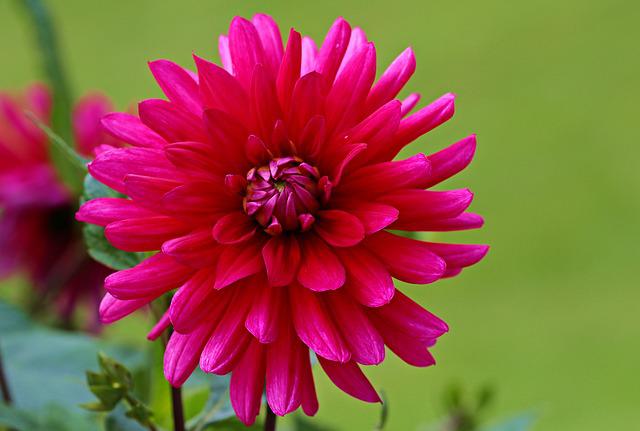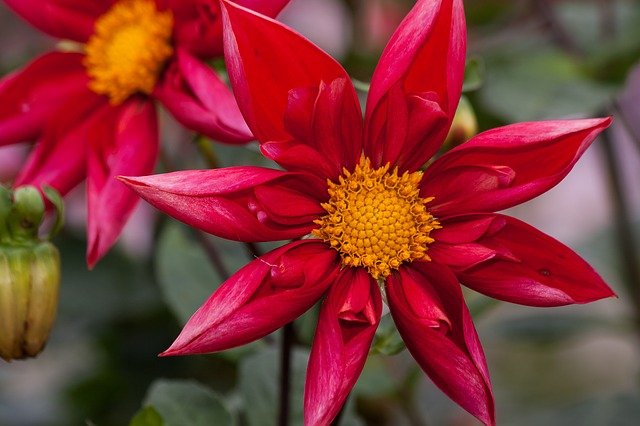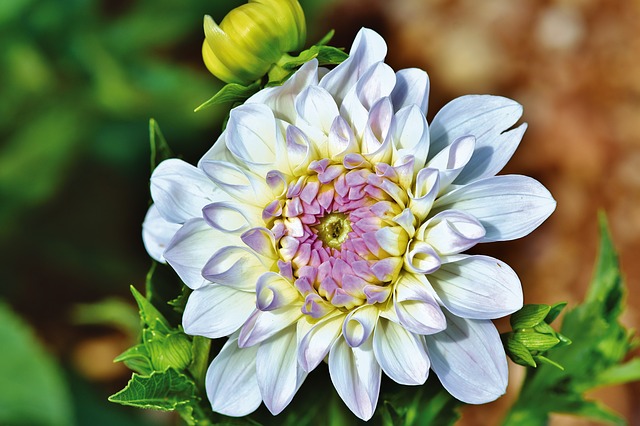Dahlia Seeds vs. Dahlia Tubers: Which is the Better Way to Grow Dahlias?

Growing dahlias from seeds can be a rewarding experience if you have the right soil, watering schedule, and sunlight exposure. However, growing tubers may be easier for those who are new to gardening as they don’t require any additional preparation other than planting in moistened soil. Both methods have their pros and cons, so it is important to choose one that works best for your individual preferences and garden situation.
Table of Contents
Which is the Easiest and Fastest Way to Grow Dahlias?
Dahlias grown from seeds tend to take longer to mature than those planted in tubers but produce flowers of greater diversity. The downside is that you will need a larger space (diverse sun exposures) for seed-grown Dahlias compared with container-grown plants.
How Do Seed and Tuber Dahlias Differ?
Growing dahlias from seed can be a very exciting gardening endeavor. It’s an entirely new ballgame. No two dahlia plants grown from seed will ever be exactly alike. True enough, when you plant dahlia flower seeds and nurture their growth, a brand new species of dahlia is born. When you buy a packet of seeds, you are purchasing a mix, which means you won’t know what color you’ll get, and sometimes you won’t know the shape and texture, either. If you are like other plant enthusiasts and enjoy surprises, buying seed packets can be a lot of fun! You can obtain beautiful flowers that no one else has. No two seed-grown plants will be identical.
The genetic makeup of dahlia flower seeds comes from both the seed parent and the bees that pollinate the flowers. You read that right. Pollinators like bees and butterflies have a significant impact on the final form your dahlia seeds take on in the garden. The genetic makeup of the dahlia seeds is altered as pollen is transferred from plant to plant by the bees. Single or semi-double flowers with an open center can be expected from the majority of dahlia seeds.
Dahlias grown from tubers will be identical to the parent tuber. This method of starting dahlias is an effective means of achieving the desired color or texture.
You can find dahlia tubers easily at garden centers and in seed catalogs. They are the most dependable and efficient method for producing large, showy flowers. Growing dahlias from seed rather than bulbs is a time-consuming but worthwhile way to increase the duration of your flowering display. It’s not hard to plant dahlia seeds, but there are some things you should know to ensure a successful garden full of vibrant blooms. Save the seed to enjoy low-cost, reliable dahlias in subsequent growing seasons.
Like bulbs, tubers are an underground organ that stores the plant’s genetic information and are therefore essential for dahlia propagation. Seeded propagation is subject to the whims of nature and may yield slightly different versions of the parent plant, while vegetative methods produce true copies of the plant. Collectors and champion dahlia breeders avoid using this method because it is not as successful as other options. What you’ll get is a complete mystery.
Many dahlia flowers produce seeds, but most gardeners prefer to save the tubers and replant them the following year to ensure the survival of their favorite variety. But the daring gardener might want to store away some of that seed to see what the following season brings. It could be a flower with even more exquisite form than its parent.
When Planted, How Long Do Dahlia Seeds Need To Germinate?

Germination of dahlia seeds can take anywhere from three days to three weeks, depending on the variety, the quality of the seed, and the environmental conditions in which it is planted. With lots of care and attention under grow lights, the first dahlia sprout appeared in just three to four days.
Growing Dahlia from Seeds
- The gathering of mature pods that are prepared for planting is the initial step in the process of growing dahlias from seed. The pods each contain a great number of seeds. Wait until the flower has shed all of its ray petals and the pod has turned into a color somewhere between tan and green. The seeds on the inside ought to be ripe and anywhere from gray to dark brown in color.
- Remove the seed pod and allow it to dry out so that the seeds can be removed more easily. After separating the seed from the rest of the pod, the seed should be allowed to dry completely before being stored. Germinating the seeds in a soilless seed-starting mixture in flats should be done in the early spring.
- Plant your seeds on top of the mixture at a distance of one inch (2.5 centimeters) apart, and then lightly cover them with a dusting of the medium. After moistening the medium and ensuring that it remains only slightly damp, move the flats to a warm location that is at least 70°F (21°C.). After sowing, the germination process will take between 7 and 12 days to complete.
- When the seedlings have grown large enough for their leaves to touch, it is time to pot them up in individual containers measuring 3 inches (7.5 cm) in diameter.
- Acclimate the seedlings to their environment before planting them in garden beds that have been prepared. Hold off on planting them outside until all risk of frost has passed before you do so.
- You also have the option of planting them outside one week before the average date of the final frost in your area. It’s possible that the plants won’t have enough time to mature and bloom in northern climates if you do this.
- However, it is very effective in regions with long seasons. At the end of the summer, if there is a chance that temperatures will drop below freezing, you should repot the plants and bring them either into a greenhouse or indoors.
- They won’t develop very many tubers, so the best way to preserve them for the following year is to allow them to go dormant indoors, where the freezing temperatures won’t be able to harm the delicate root and tuber system. After one more season of hardening off, you can plant them outside. You will end up with large, gorgeous plants that are covered in a profusion of alluring flowers and will produce pods, which will trigger the process of growing dahlia seeds all over again.
Growing Dahlia from Tubers
- If you don’t have the space to plant the tubers in containers first, you can plant them directly into the ground in the spring. Just be sure that the danger of frost has passed.
- Plant the tubers just beneath the soil’s surface and space them approximately 75cm (30in) apart, depending on the variety.
- When planting, insert a sturdy stick to serve as a stake, as the mature plants can be quite substantial. Cover them with mulch or cover them with horticultural fleece or a cloche to protect them from pests. This is especially crucial if the leaves appear before the frosts have passed.
- Whether you’ve grown your dahlia tubers in the garden or indoors, you must pinch off the growing tips of the main shoot once three pairs of leaves have developed. Using a sharp knife or pinching between the thumb and forefinger, remove the top pair of leaves.

Dahlia Seeds vs. Tuber
| Dahlia Seeds | Dahlia Tubers |
| Pros | Cons | Pros | Cons |
| increase the duration of your flowering display | takes longer time to mature | Lesser time and easier to grow and propagate | Need larger space |
| Large and showy flowers | need extra care | complete control over plant shape, size,etc. | Unfavored for risk takers who prefer diverse and new characteristics of blooms |
| Produce greater diversity; new color, shape, size etc of blooms | Very unpredictable; Not identical to parent plant | achieving the desired color or texture; clone to parent plant | Produce true copies of parent plant, might be boring for some |
| Do not rot if stored | Avoided by some breeders as flowers became mystery and not produce expected outcome | Favored by some breeders saved the tubers and replanted them to ensure their favorite variety’s survival | Might rot or dried until death if not properly stored |
| Available to online stores and outlets | Might be Time consuming to collect seeds and messy | Available for propagation once plant is matured enough | Not available to some online stores |
| Lower cost compared to tubers | Not all seeds will grow | Guaranteed growth than seeds | Higher cost compared to seeds |
